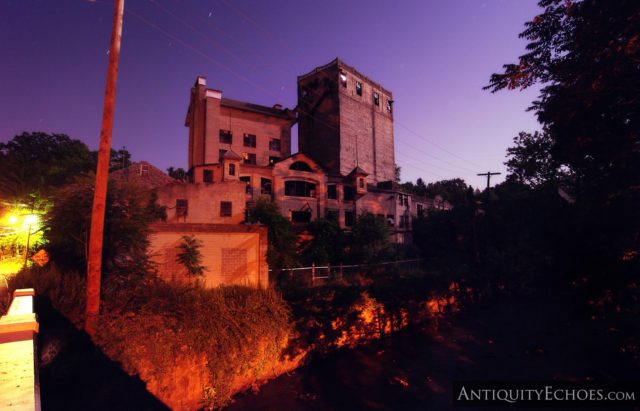The Disappearing Gingerbread Castle
The Gingerbread Castle was a charming amusement park in Hamburg, New Jersey. But this site, with its rich history, was more than just a castle – it held stories before its fairytale transformation.
Once upon a time, this spot drew in hundreds of visitors daily. Recently, though abandoned, it became a fascination for those intrigued by unique and forgotten places. Today, it’s being lovingly revived.
#1

#2

#3

#4

Before the Castle
In 1768, an ironworks was established on the edge of a rural river in New Jersey. As time passed, forges were added near the factory. Sadly, the forges shut down in 1774 due to tough competition. You can learn more about it at www.AntiquityEchoes.com.
Then, in 1808, the building transformed into a mill, using the power of the Wallkill River to produce flour.
Fast forward to 1921, when Fred Henry Bennett acquired the mill for his F.H. Bennett Biscuit Company; this mill made milk bone biscuits, a dog treat.
#5

#6

Bennett’s businesses flourished, prompting him to expand the mill by acquiring more land. He started processing grain for biscuits called Wheatsworth, a type of whole-grain cracker tastier than regular white flour crackers. This led to the site being nicknamed the “Wheatsworth Mill.”
Idea & Creation
As time passed, biscuit sales declined, and Bennett needed a fresh approach to boost his business.
In the late 1920s, he attended a Hansel & Gretel performance at the Metropolitan Opera. This sparked an idea to use fairy tales to revive his business.
Bennett turned to renowned Austrian architect Joseph Urban to design and build a theme park featuring a gingerbread castle. He believed that biscuit sales would soar by attracting visitors to this park.
#7

#8

#9

The project cost $50,000 (equivalent to about $700,000 today) and took two years to complete.
Grand Opening
In 1930, Gingerbread Castle opened its doors and quickly became a favourite destination. The castle’s picture even appeared in Time magazine on opening day.
The children’s amusement park was inspired by the Grimm brothers’ stories, which Bennett adored. Guides dressed as Hansel and Gretel led tours around the site.
The park was filled with enchanting characters like a six-foot armoured knight on top, a giant stone cat, and paintings of pink elephants. They even had cookies made of cork!
#10

#11

The castle was the highlight, a three-story concrete marvel resembling an icing-covered house. Visitors could reach the main hall via a spiral staircase.
Changes in Ownership
Bennett sold his business to the National Biscuit Company in 1931. (now Nabisco), but the Gingerbread Castle remained open. The mill was repurposed for Nabisco’s use.
#12

#13

1943 the plant was sold to Plastoids Corporation, which produced cables. However, the company shut down in 1989, leaving the building unused.
Ups and Downs
Initially, Gingerbread Castle thrived as a tourist spot, but by the late 1970s, its charm faded. The pink facade faded, and in 1978, the theme park closed.
#14

#15

#16

It reopened briefly in the late 1980s under new ownership but closed again due to low attendance.
Present Times
Since then, there have been two attempts to restore and reopen the park, but both fell short.
In 2004, a New Jersey resident named Frank Hinger purchased the property and secured a restoration grant. However, more funds were needed, and the project was abandoned.
In 2007, the castle changed hands again, but it must still be addressed.
#17

#18

#19

#20

In 2018, hope returned when Don Oriolo took over the castle with a vision to restore it. The court is now off-limits for restoration work. Recent updates suggest Oriolo is cleaning and redecorating the palace and park, aiming to open it for “limited events” soon.
Source: abandonedspaces
Read More
Transformation of a Historic Institution: Denbighshire Mental Hospital’s Evolution Over Time
Belgium’s abandoned Château Rouge – Red Castle
Exploring The Crypto Kings’ Abandoned Mansion in the City